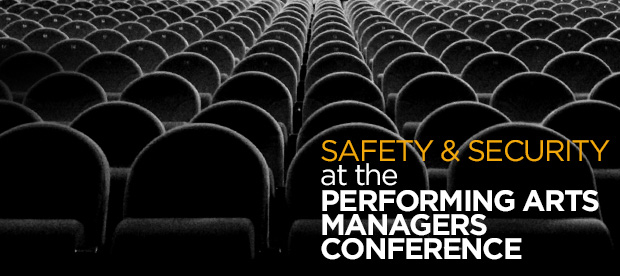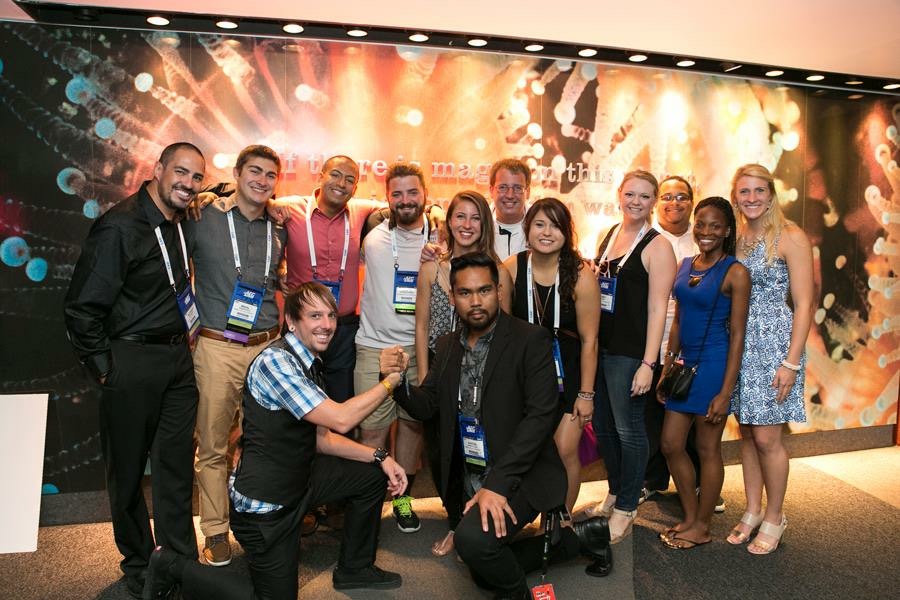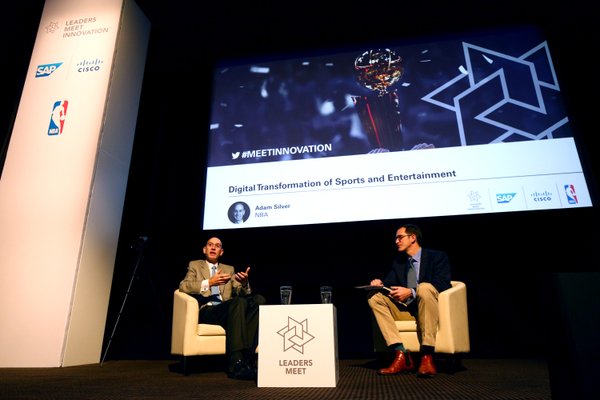The Facebook Sports Stadium
Facebook claims that it is the world’s largest stadium because of its 650 million sports fans. And since those fans already use Facebook to comment on games, the company has built a dedicated place for sports so that you can feel like you’re watching the game with friends and other fans.
“With Facebook Sports Stadium, all the content on Facebook related to the game is in one place, and it comes in real time and appears chronologically,” wrote Steve Kafka, product manager for Facebook.
Users can see comments on plays from friends, posts from team and league experts, live scores and stats, and game info. Here are a couple of screenshots.

“You can follow the action as the game unfolds with a live play-by-play, and even like, comment on, and share individual plays,” Kafka wrote. “You can also get up to speed quickly with live scores and the most discussed plays. It’s a second-screen experience that we hope makes watching the broadcast even better.”
Facebook is focusing on American football games at the moment and will include other sports around the world soon. Also, it’s only available on iPhone in the U.S. at the moment. I’m sure they’ll get to Android, the world’s largest operating system, quickly.
Safety and Security and the Performing Arts

Safety and security has emerged as a top focus at this year’s Performing Arts Managers Conference (PAMC) in San Antonio, March 7-9, with new opportunities for attendees to participate in dynamic learning experiences and expert-led discussions.
“Our goal is to provide an engaging, interactive experience at the Performing Arts Managers Conference. The 2016 program will include situational awareness, resources available to protect our public facility assemblies, and relevant expertise regarding critical infrastructure protection, mass casualty incidents, and staff preparedness during an event,” said Mark Herrera, IAVM’s director of education and a former tactical sergeant. “We’ve added a customized exercise that will enable participants to explore specific issues, consider the use of available, limited resources, and quickly develop action strategies to manage an unexpected incident involving a terrorist attack or hostility during an event. Through discussion and insight from experienced experts, attendees will gain an appreciation for the complexity of managing a critical incident and how to best prepare for, prevent, respond to, and recover from an incident such as the Paris attacks.”
Herrera, Harvey Perriott, and Justice Narvaez will facilitate the exercise and discussion.
Harvey Perriott is the protective security advisor (PSA) for the North Texas District of the U.S. Department of Homeland Security and has served in that role for more than seven years. Prior to joining the PSA program, he served as the staff director for the Office of Infrastructure Protection’s Protective Security Coordination Division (PCSD). With more than 25 years’ experience in Department of Defense Special Operations, Perriott has been involved either directly or indirectly in several military operations directed at counterterrorism activities. He has extensive experience in performing studies, analyzes, and evaluations in a wide variety of areas, including surveying, mission capability, force strategy, force structure options, and tactics, techniques, and procedures.
Robert “Justice” Narvaez has trained more than 2,500 U.S. law enforcement officers and more than 600 foreign militaries and federal forces. He was a vital member and former trainer for the Deployable Operations Group (D.O.G.) and led anti-terrorism missions including a specialized team in the Commissioning Court in Guantanamo Bay, Cuba, that oversaw movements of five terrorists responsible for the attacks on Sept. 11, 2001. He has trained with and in SWAT tactics for nine years. Throughout his military career, Narvaez has been awarded one Coast Guard Commendation Medal, four Coast Guard Achievement Medals, one Navy Joint Service Achievement Medal, and one Army Achievement Medal for his dedication, knowledge, and professionalism.
How the IAVM Foundation Helped Launch My Career

2015 VenueConnect interns.
2015 was a year that really fostered my development as a young professional in the entertainment and venue industry. I did two event internships, one in Sydney, Australia, for a company called Business Chicks and another through Big Brothers Big Sisters of the Ozarks. Fortunately, 2015 was also the year when I got involved with the International Association of Venue Managers (IAVM). Being a student in my senior year, it was hands down the best decision I made for my career and future in the industry.
I attended and interned at two conferences, VenueConnect in Baltimore, Maryland, and the International Convention Center Conference in Atlanta, Georgia. The IAVM Foundation helped me fund these learning experiences and gave me the opportunity to network with industry leaders through the Joseph A. Floreano Scholarship + Internship Program. I made connections and developed relationships that were essential to my growth and success. The people of IAVM were not only supportive but eager to build up young leaders and were always there to lend a hand. Many doors have opened through being a student intern at these conferences. Additionally, the industry knowledge I attained through these conferences is astonishing. Being able to participate in discussions and attend cutting-edge sessions on current trends helped me understand the industry in a whole new light.
I have since graduated from Missouri State with an entertainment management degree and moved to Nashville, Tennessee, to pursue a career. With the help of the people I met through IAVM, I am more than ecstatic to say that I got a job as the events and talent coordinator at the Grand Ole Opry House. I owe a lot to the IAVM Foundation for helping me achieve my goals to be able to work with a company I admire so much doing exactly what I am most passionate about. I could easily say that I got my dream job, and I am so excited for what the future holds and send my greatest gratitude to this organization.
News You May Have Missed

These are selected news articles that showed up in our inboxes on Monday morning that we want to pass along to you.
BOK New Safety Protocols Encourage Other Venues to Boost Security (KTUL.com)
“Madonna headlined the first big event of the year at the BOK Center in Tulsa. The concert is also the biggest event where the arena’s new security protocols were enforced.”
Rangers Extend Deal With XL Center (TheAHL.com)
“The New York Rangers today extended their contract with Spectra by Comcast Spectacor, the providers of venue management to the XL Center, for the Wolf Pack, the Rangers’ American Hockey League affiliate, to continue playing their home games at the XL Center through the 2016-17 season.”
CAA Premium Experience Forms Exclusive Partnership With iRENA, Expands Event Management and Corporate Hospitality Footprint in China (Business Wire)
“CAA Premium Experience, a division of leading entertainment and sports agency Creative Artists Agency (CAA), and iRENA International, China’s preeminent sports hospitality and event management company, have formed an exclusive partnership to curate and fulfill completely customized once-in-a-lifetime VIP experiences, with a preliminary focus on basketball, tennis, entertainment, and fashion, for individuals and corporations in China.”
Tampa Bay Lightning Integrate Retail POS and Inventory Management with NCR Counterpoint Software (Business Wire)
“NCR software delivers purchasing, receiving, inventory control and credit card processing in single solution at Amalie Arena.”
Omaha City Council Approves First Step for Holland Center’s Expansion Downtown (KETV.com)
“The vote Tuesday doesn’t approve any bonds, a purchase agreement for the buildings, or any demolition permits. It adds Holland’s eventual expansion to a northeast downtown redevelopment plan.”
(Image: Facebook)
Adam Silver Talks Technology at Leadership Summit

NBA Commissioner Adam Silver spoke yesterday, January 14, at the Leaders Meet Innovation event in London, England, about how technology is changing the business of basketball, both on the court and off. In addition to topics such as player tracking and analytics, he spoke about apps and arenas.
“If you watched a game at home, you would have access to a lot of information that you wouldn’t have while sitting at the game – that struck us as getting things backwards,” he said, as reported by Patrick Burgoyne for Creative Review. “The people who were paying the most money and who are the most devoted fans didn’t have the same access to information as those at home.”
Silvers said that apps can provide a “driveway to driveway” game day experience. For example, fans can access the best driving routes to an arena, best parking choices, and best entrances to use, all through an app.
“Because we know where that fan is in the arena and their prior habits, we know if somebody likes to buy a hotdog before the game, so there’s a discount for them,” Silver said. “We know if they are a fan of a particular player, they might want to buy a jersey, so a promotion comes up for that jersey and it can be delivered to their seat. The opportunities are endless.”
For more on Silver’s thoughts about virtual reality (“a game changer”) and live streaming, please read Burgoyne’s article in Creative Review.
(Image: Twitter)
Do you want to receive a Front Row News weekly digest?
Categories
- Allied (861)
- Architecture (147)
- Arenas (747)
- Career (897)
- Convention Centers (895)
- Education (623)
- Events (1,544)
- Food & Beverage (193)
- Foundation (113)
- Guest Experience (1,496)
- Industry News (2,270)
- Leadership (1,888)
- Marketing (150)
- Membership (2,000)
- Music (213)
- Performing Arts Centers (454)
- Professional Development (409)
- Research (127)
- Safety & Security (442)
- Sports (763)
- Stadiums (608)
- Student (159)
- Technology (516)
- Ticketing (92)
- Touring (82)
- Trends (364)
- Uncategorized (725)
- Universities (218)
- Video (25)
- Young Professional (198)
Twitter Feed
- Twitter feed loading
Recent Posts
- McNamara Named General Manager of Will Rogers Memorial Center
- Matt Rife Breaks Record for Most Tickets Sold for a Comedy Show at Honda Center
- The Events Industry Council Recognizes the Miami Beach Convention Center (MBCC) for Achieving Gold Level Sustainability Certification
- Raleigh Convention Center Shares Designs of Upcoming Expansion
- Acrisure Arena Wraps ‘Magnificent 7’ with Record-Setting Week of Live Entertainment, Welcoming Fans from All 50 States
Categories
- Allied
- Architecture
- Arenas
- Career
- Convention Centers
- Education
- Events
- Food & Beverage
- Foundation
- Guest Experience
- Industry News
- Leadership
- Marketing
- Membership
- Music
- Performing Arts Centers
- Professional Development
- Research
- Safety & Security
- Sports
- Stadiums
- Student
- Technology
- Ticketing
- Touring
- Trends
- Uncategorized
- Universities
- Video
- Young Professional
Archives
- November 2025
- October 2025
- September 2025
- August 2025
- July 2025
- June 2025
- May 2025
- April 2025
- March 2025
- February 2025
- January 2025
- December 2024
- November 2024
- October 2024
- September 2024
- August 2024
- July 2024
- June 2024
- May 2024
- April 2024
- March 2024
- February 2024
- January 2024
- December 2023
- November 2023
- October 2023
- September 2023
- August 2023
- July 2023
- June 2023
- May 2023
- April 2023
- March 2023
- February 2023
- January 2023
- December 2022
- November 2022
- October 2022
- September 2022
- August 2022
- July 2022
- June 2022
- May 2022
- April 2022
- March 2022
- February 2022
- January 2022
- December 2021
- November 2021
- October 2021
- September 2021
- August 2021
- July 2021
- June 2021
- May 2021
- April 2021
- March 2021
- February 2021
- January 2021
- December 2020
- November 2020
- October 2020
- September 2020
- August 2020
- July 2020
- June 2020
- May 2020
- April 2020
- March 2020
- February 2020
- January 2020
- December 2019
- November 2019
- October 2019
- September 2019
- August 2019
- July 2019
- June 2019
- May 2019
- April 2019
- March 2019
- February 2019
- January 2019
- December 2018
- November 2018
- October 2018
- September 2018
- August 2018
- July 2018
- June 2018
- May 2018
- April 2018
- March 2018
- February 2018
- January 2018
- December 2017
- November 2017
- October 2017
- September 2017
- August 2017
- July 2017
- June 2017
- May 2017
- April 2017
- March 2017
- February 2017
- January 2017
- December 2016
- November 2016
- October 2016
- September 2016
- August 2016
- July 2016
- June 2016
- May 2016
- April 2016
- March 2016
- February 2016
- January 2016
- December 2015
- November 2015
- October 2015
- September 2015
- August 2015
- July 2015
- June 2015
- May 2015
- April 2015
- March 2015
- February 2015
- January 2015
- December 2014
- November 2014
- October 2014
- September 2014
- August 2014
- July 2014
- June 2014
- May 2014
- April 2014
- March 2014
- February 2014
- January 2014
- December 2013
- November 2013
- October 2013
- September 2013
- August 2013
- July 2013
- June 2013
- May 2013
- April 2013
- March 2013
- February 2013
- January 2013
- May 2012
- March 2012
- December 2011
- November 2011
- October 2011
Recent Comments
- Frank Bradshaw, Ph.D., CVE on John Meyer, CVE, a Tireless Advocate of Certification for Venue Professionals, Has Died
- Neil Sulkes on Hilary Hartung, Friend to Many in Venue Marketing, Has Left Us
- Jason Parker, CVE on The Devastation of Hurricane Helene and How We Can Support One Another
- Larry Perkins on Touhey Testifies Against Speculative Ticketing Before Congressional Subcommittee
- Peter Secord on Major Players for Planned Elkhart Amphitheater Were in the Mix at VenueConnect
